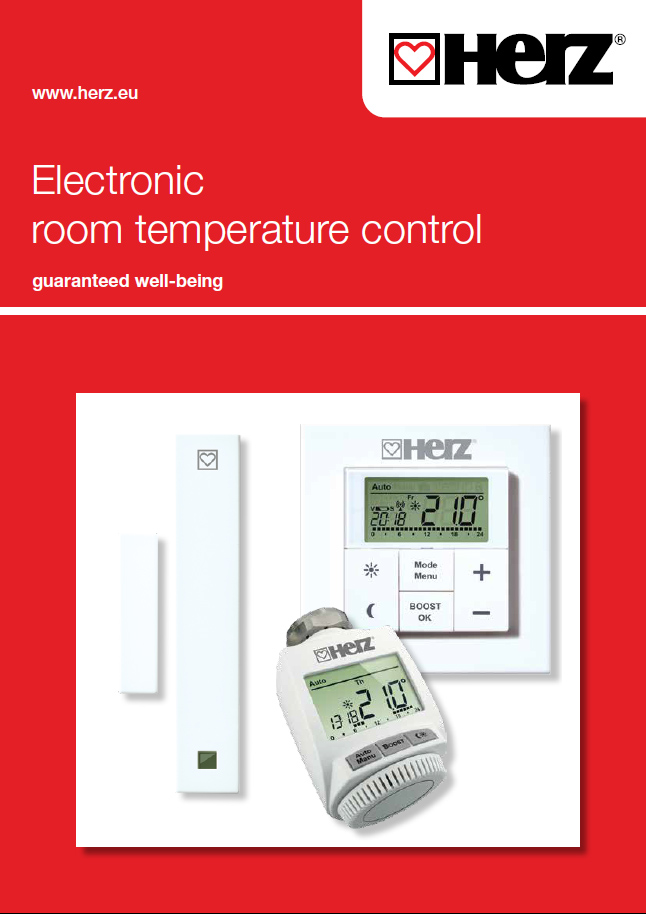Hydraulic balancing
This is the reality
Funding for hydraulic balancing? Yes, there is. For years, the importance of hydraulic balancing was underestimated. The main victims were the end users - some due to insufficient heat in the rooms, others due to overheating of the rooms. What they all had in common, however, were the high operating costs resulting from the excess energy consumption caused by the unregulated heating system. Converting the system requires knowledge, time and money.


Since last year, funding has been available for heating optimisation in multi-storey residential buildings with at least six units. This time, the focus is also on consultation, as only projects in which both the consultation and the investment measures are carried out are subsidised. Industry expert and sworn expert Gerald Paukovits writes for our HERZ News readers about hydraulic balancing and its simple realisation:
What is it that everyone is talking about?
Hydraulic balancing of heating systems is an important process for ensuring efficient and even heat distribution in buildings. This process is becoming increasingly important in Austria, as it not only saves energy but also protects the environment. With hydraulic balancing, the radiators or underfloor heating systems in a building are adjusted so that each room receives the required amount of heat. This is done by individually adjusting the flow rates at each heat-emitting surface according to the heating load in accordance with ÖNORM H 7500 or ÖNORM EN 12831.
Without hydraulic balancing, heat distribution may be uneven, leading to increased energy consumption and a loss of comfort. The larger or more extensive the circumstances and therefore the supply network, the more precisely the control or regulating valves must be calculated in order to ensure an even heat supply. Whether differential pressure regulators, volume flow regulators or static regulating valves are used depends on the respective circumstances. In this case, it is essential to carry out an on-site survey or review the existing building documents.
Funding
In Austria, the hydraulic balancing of heating systems is subsidised by various measures. For example, there are funding programmes at federal and state level that offer homeowners financial incentives for carrying out hydraulic balancing. These subsidies can cover part of the costs and thus make the investment more attractive for homeowners.
Funding is available for projects carried out from 1 April 2023 that include both service and investment costs. Registration for the subsidy is exclusively online at www.umweltfoerderung.at and can be submitted by building owners or their authorised representatives. The grant is calculated as a lump sum for each heated unit and is limited to 50% of the eligible consultancy costs and 50% of the eligible investment costs.
More information at:
www.umweltfoerderung.at
What is important?
The calculated volume flows can only be efficiently transported to the respective heat-emitting surfaces by correctly setting all the control components of a building with suitable measuring devices. Water is a "lazy" medium and always seeks the path of least resistance. Correct hydraulic balancing adjusts the resistances so that the medium is distributed correctly throughout the system. Even to the most distant heating surfaces.
An example from practice - Conversion of an old apartment block
An example of successful hydraulic balancing can be illustrated using an old apartment block with little to poor thermal insulation in Wiener Neudorf. The building had a single-pipe heating system without temperature or volume flow regulation for the individual residential units. Room temperature control could only be realised using the "window ventilation" method. The reason for this was that, despite the radiators being switched off, heat continued to be emitted into the room via the ring of the single-pipe heating system in the floor. This was no longer acceptable.
We proposed and implemented a room temperature control system that acts on an adjustable zone valve with actuator for each residential unit in the stairwell of the respective storey or the route to the flat. This made it possible to adapt the volume flows of the individual residential units to the heating load. The room temperature controller in conjunction with the zone valve had the advantage that when the desired room temperature was reached, the zone valve also closed the ring of the single-pipe heating system via the actuator. This measure made it possible to get the problem of overheating under control.
Through the adjustment, the water quantities could be reduced to such an extent that they actually correspond to the calculation according to ÖNORM H 7500 or ÖNORM EN 12831. Subsequently, the heating pumps were converted to operation so that they can react to the number of active flats and thus adjust the volume flow.
The result - 36 % savings in the amount of heat
By controlling the room temperature and regulating the heating circuits with the correct volume flow per unit, lower return temperatures could be achieved. Regulated flats generally have a lower heat requirement and therefore less heat loss. Thanks to these measures, a saving of 36 % of the previously purchased heat was achieved in this property.
HERZ News would like to thank Mr Paukovits for his exclusive contribution, which gives our readers an insight into the practical world of hydraulic balancing.
Ing. Gerald Paukovits
Ing. Gerald Paukovits has been working in the field of hydraulic balancing for over 10 years and runs the company Messpunkt GmbH. As a sworn and court-certified expert for heating technology, sanitary installations, drinking water hygiene, ventilation technology and air conditioning technology he supports his customers from the initial consultation and calculation of the necessary measures through to the installation of the control or regulating valves and the recording of the hydraulic balancing in accordance with ÖNORM
EN 14336.
Contact:
Messpunkt GmbH
Gumpendorferstraße 43 / 2-3
A-1060 Vienna



